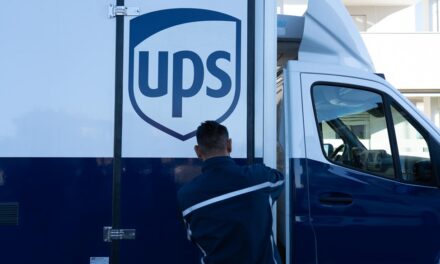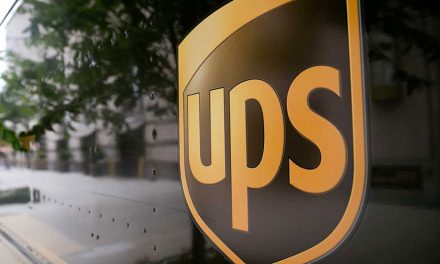
UPS tracking progress on business sustainability goals
UPS (NYSE:UPS) today reinforced its ongoing commitment to balancing economic, social and environmental objectives by releasing the company’s third annual Corporate Sustainability Report.
The report demonstrates UPS is moving forward on a number of important goals, including increasing fuel efficiency, lowering aircraft emissions and reducing employee injury rates. Additionally, this year’s report includes more global information than ever before.
“At UPS, we’re never satisfied with the status quo,” observed Mike Eskew, UPS’s chairman and CEO. “And with today’s increasingly interdependent world, sustainable business practices add up to smart business practices.”
UPS was the first company in its industry to issue a sustainability report and to publicize its goals for business practices that enhance communities and protect the environment. In doing so, UPS also had to develop several industry-specific metrics that appropriately measure business impacts.
The first Corporate Sustainability Report, Operating in Unison, was issued in 2003 using data based on year-end 2002 information. The vision, strategy and goals outlined in that initial document were set for 2007, UPS’s 100th anniversary. UPS is providing online annual updates until 2007, at which point a centennial sustainability report will be issued.
The 2004 Corporate Sustainability Report includes economic, social and environmental data.
Economic Sustainability
For the third consecutive year, UPS was included in the Dow Jones Sustainability Index, an index of companies that meet specific sustainability criteria.
In 2004, UPS was added to the FTSE4Good Index, a leading European index fund comprised of socially responsible companies.
Social Responsibility
UPS awarded more than US$540 million in contracts through its Supplier Diversity program.
Lost-time injuries per 200,000 hours were reduced by 29 percent.
The second annual UPS Global Volunteer Week was a huge success, with triple the number of volunteers and volunteer hours compared to 2003.
Environmental Stewardship
UPS continued to enhance its ground fleet with its “rolling laboratory” philosophy, deploying alternative-fuel vehicles to learn how new technologies can be adapted for use in the real world. Hydrogen fuel cell Sprinters and an electric vehicle were added to the fleet.
The roll-out of Package Flow Technology into the U.S. package operation continued to reduce miles traveled, fuel consumption and fuel emissions through improved route planning, vehicle loading and package delivery.
UPS Airlines, the world’s ninth largest airline, has begun a broad examination of additional steps that could reduce its fuel consumption.
Renewable solar energy provides 70 percent of the power source for the UPS Palm Springs, Calif. facility. The 100-kilowatt solar panel array exceeded expectations in 2004 by producing 4.9 percent more power than anticipated. Some 405,000 pounds of CO2 emissions have been saved since implementation in July 2003.












